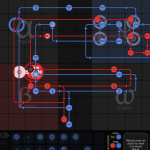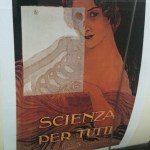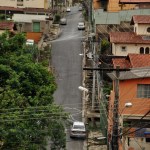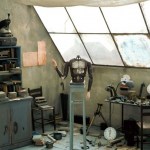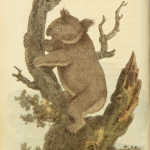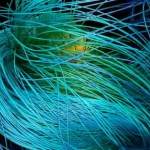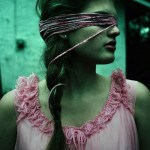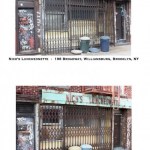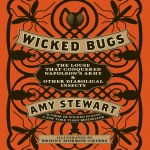ephemera
A few months ago I got an email from Zachtronics, creators of the Codex of Alchemical Engineering, about the new indie game called SpaceChem. It was billed as "an obscenely addictive, design-based puzzle game about building machines and fighting monsters in the name of science." What's not to love?
Here's a preview. . .
Science!
Game reviewer Quintin Smith loved it:
SpaceChem is a game where you build fabulous contraptions. It's about getting stuck into a massive puzzle, laughing at the optimism of what's expected of you, and then finally applying what might be the finishing touch to your…
This video from Xperia Studio very effectively conveys how data visualization can both leverage and challenge our conceptions of "reality." The night sky we've seen since childhood, like everything else we see, is just a tiny slice of the spectrum - only what we can perceive with our limited physiology. An app that lets us "see" otherwise invisible wavelengths is not merely a prosthesis that cleverly enhances our sensory perceptions, it's a tool to expand our worldview, by reminding us that what we see is only a limited subset of the whole: we could as easily see quite a different world, and…
Photo of Vermont highway courtesy of Kyle Cornell
Last week, I had my long-awaited vacation semi-ruined when, thanks to Hurricane Irene, my flight back from the West Coast was cancelled. I had to rent a car and drive across the country in a rush - not my favorite way to spend three and a half days. But based on what I saw passing through New York, and what I've heard about the damage in Vermont, I can't complain: flooding has overturned homes, isolated entire towns, and destroyed everything some families own.
Vermonters are a notoriously self-sufficient bunch, and I haven't seen that much…
Etsy seller bullseyebeads makes glass acorns and tops them with real acorn caps. I think they're adorable.
Gold Cortex
16 x 20, 2010
Greg Dunn
I used to have a beautiful gold Japanese folding screen, which was purchased by my great-grandmother's feisty sister on a trip in the 1920s. I loved the gold patina and the surprisingly modern impact it had on my wall. At the moment, it's loaned to a friend, but looking at Greg Dunn's artwork, I couldn't help but be reminded of the best aspects of my screen: the gold leaf, crisp black patterns, and way that the scene seemed half natural, half abstract.
The biggest twist Greg, a 6th year graduate student in neuroscience at the University of Pennsylvania,…
Chalk Outline Tree
Armando Fontes (graffiti) and Catia Rissi (photographer)
Armondo Fontes and Catia Rissi call their chalk outlines of cut urban trees a "collective denunciation as an environmental graffiti." Fontes, who lives in the city of Belo Horizonte in southeastern Brazil, saw that trees were being cut and the city was not replacing them. He decided to engage in a guerilla art protest:
With the stumps that remain after cutting the trees, Fontes draws what would have been the shadow of the tree that once existed there. "I thought to refer to the universe of the cartoon. The silhouette…
L'Automaton #06, 2010
Paolo Ventura
(zoom view available here)
Artist-photographer Paolo Ventura constructs and photographs miniature, dreamlike scenes. His Winter Stories represent the reminisces of an old circus performer. Above, a scene from the Automaton series captures a mysterious, half-built android. Who is the android's creator? When and where is this happening? Ventura's work is evocative precisely because it is so mysterious. (It turns out that Ventura's backstory for the Automaton series involves a lonely watchmaker in the Jewish ghetto of 1942 Venice - but still, that hardly…
From 1810-11, architect and amateur naturalist George Perry published The Arcana, a lavishly illustrated, serial natural history magazine. Although Perry intended for the serial issues to be assembled by his subscribers into a book, only thirteen complete copies are known to survive today. More than a third of the known copies are in Australia - perhaps fittingly, as Perry was the first to publish an illustration of the koala (above).
Perry's work is not well known; in researching this post, all I could find online were auction listings and occasional references to a recent facsimile…
"Magnetic Field Outflows from Active Galactic Nuclei"
P.M. Sutter, P.M. Ricker, H.-Y. Yang, G. Foreman, D. Pugmire/ORNL
Wired has an article/webgallery of award-winning scientific visualizations which is worth a lunchtime visit. (Having trouble with Wired's interface? The videos collected there are the winners from SciDAC 2011's "Visualization Night" challenge, so you can also just watch them here.)
These visualizations are not your usual public-facing educational animation. Rather, they're just what you'd see at a scientific meeting - dry, functional, aimed at a specialist audience, and…
This little video from Abebooks is the closest I've ever gotten to flipping through a copy of the Codex Seraphinianus. What a truly weird book.
I particularly love it when the staid narrator reveals his "favorite" illustration - a roller skater murdered by a monstrous pen. What?!
The Codex reminds me of If You're Afraid of the Dark, Remember the Night Rainbow by Cooper Edens. My mom had a copy and I used to flip through it as a child, confused and not a little disturbed. I still took things too literally to appreciate the visual non sequiturs, combined with the nonsensical text ("If you…
The New York Times did a special Sunday supplement on graduate programs. The editorial graphics they commissioned have much truth to them, grasshopper.
Untitled, from "The Others"
Jordan Tiberio
My favorite thing about the internet is serendipity. Click here, click there, and the next thing you know you're scrolling down the gallery of an 18-year-old photographer whose artistic sensibility seems equal parts 1970s fashion magazine, pre-Raphaelite fairy tale, and Sigur Ros music video. Lovely young women are hardly an original topic, but Tiberio's work seems to catch a disquieted, ambivalent undertone to the beauty. Is it ambivalence about the artifice of fashion, about aging, about one's own body and sexuality? I have no idea, but I'm…
Nick's Luncheonette
Randy Hage
Via the eye-candy blog How to Be a Retronaut (thanks Miles for first sending me a link there), the painstakingly accurate miniature Manhattan streetscapes of LA artist Randy Hage are half-toy, half-historical document - a wonder cabinet of urban curiosities.
Hage's overarching goal is to preserve rapidly disappearing streetscapes. As he told Jeremiah Moss at Vanishing New York,
I remember one instance in particular that prompted me to seriously focus on this project. I was on my way to revisit a Brooklyn donut shop that I had photographed a year earlier. I…
If this luminous, high-definition, time-lapse film of Arctic skies and seas by Norwegian photographer TSO (Terje Sorgjerd) doesn't vaporize your stress in under three minutes, I don't know what will. Be sure to click the video controls to view full-screen - this one is worth it.
Via Andrew Sullivan.
Amy Stewart's new book Wicked Bugs: The Louse That Conquered Napoleon's Army & Other Diabolical Insects takes a fairly trivial concept - a collection of historical anecdotes and icky factoids about dangerous insects - and executes it remarkably well. The book is well-written and has a non-cloying sense of humor ("she's just not that into you," begins the section relating how female praying mantids eat the males). Briony Morrow-Cribbs lends her insect illustrations (see a NYTimes slideshow of her ink illustrations here), and Anne Winslow's design plays off the concept of a vintage…
This 1967 IBM propaganda film, "Paperwork Explosion," couples an eerily deadpan refrain of "more time on paperwork," with a creepy pseudo-country neighbor* urging us to embrace Progress.
The film's frenetic soundtrack and abrupt transitions embody the familiar hysterical nervousness of an increasingly automated era, while striving the whole time to convince us that technology will relieve the pressures of the modern workplace, allowing us to "think" instead of "work". Looking back, of course, it's clear that technology instead cranked the pressure up. If writers like Nicholas Carr are to be…
One of the much-hyped benefits of social networking is that it provides a way to get personalized recommendations about businesses from a wider network. If I want to tell the world that the coffee place in my neighborhood has the best cappuccino this side of Seattle, I can do that (and it does)! That's what Yelp is for - right?
Well, not quite. I realized a while ago that my reviews don't show up on Yelp anymore. They've been "filtered" from the site, like thousands of other users' reviews. Yelp won't explain why (they say if they did explain the algorithm, it would allow merchants to game…
Via Alexis Madrigal's Mississippi explainer at the Atlantic, this beautiful map of the Mississippi's historic meanderings is like a carelessly draped cluster of silk ribbons. Madrigal says,
If the Mississippi were allowed to do what it wanted, what is now the Atchafalaya River would become the new ending of the Mississippi. Again, in a purely natural world, that would be a six of one, half dozen of the other situation. But now human systems depend on the Mississippi remaining roughly as it was in 1900 when we started to build massive amounts of infrastructure.
As you can see, the river is a…
The making of an hourglass:
The Hourglass from Ikepod on Vimeo.
"Director Philip Andelman traveled to Basel, Switzerland, to document the designer's modern take of the classic hourglass inside the Glaskeller factory. Each hand made hourglass comprises highly durable borosilicate glass and millions of stainless steel nanoballs, and is available in a 10 or 60 minute timer."
Music by Philip Glass ("Opening").
Via Braniac.
